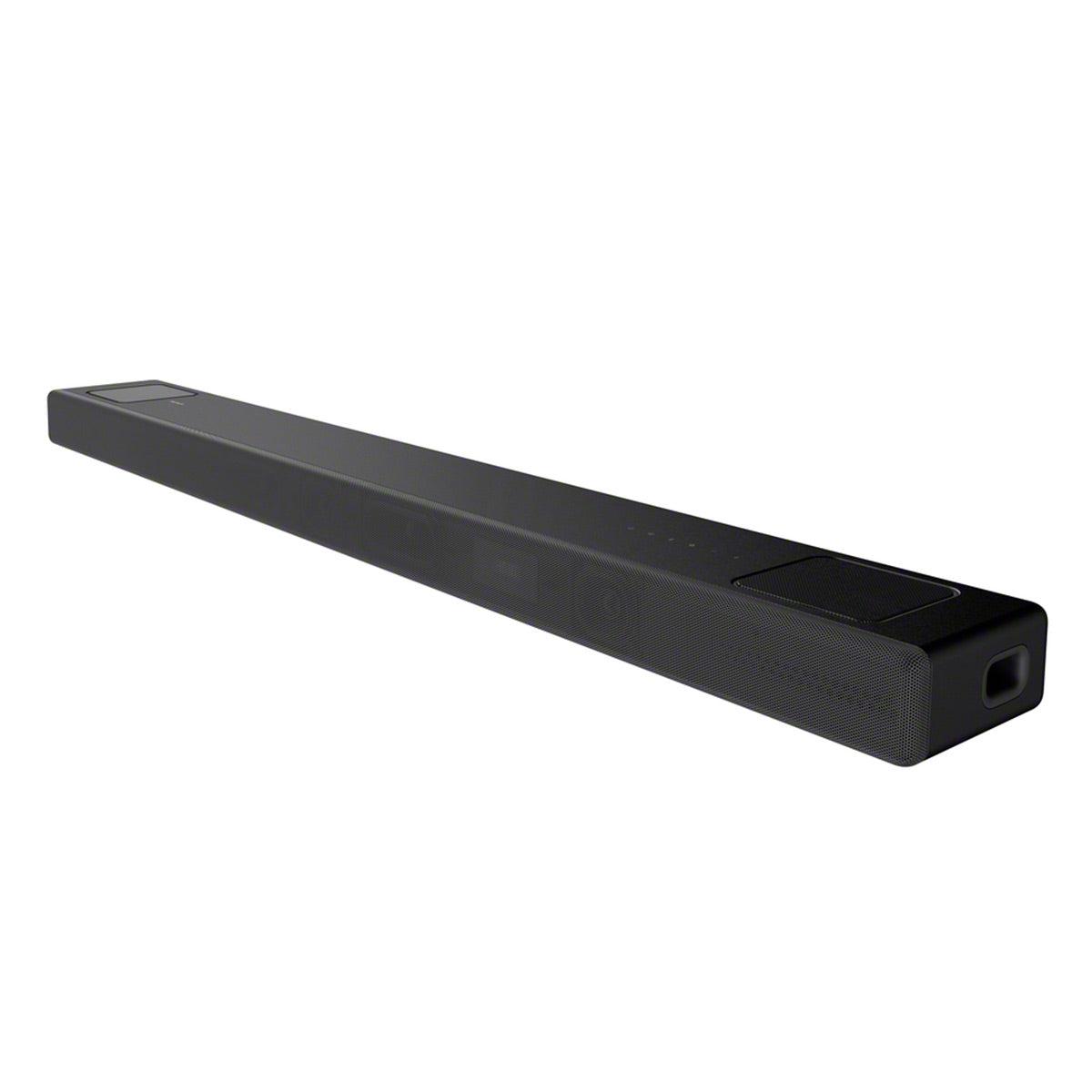
In the rapidly evolving world of home theater audio, premium soundbars have become an increasingly popular choice for those seeking cinema-quality sound without the complexity of traditional multi-speaker setups. Today, we're comparing two compelling options: the Sony HT-A5000 ($640) and the JBL Bar 1000 ($900).
Soundbars have come a long way since their introduction as simple stereo alternatives to TV speakers. Modern premium soundbars now incorporate sophisticated audio processing, multiple channels, and advanced features like Dolby Atmos support, which creates a three-dimensional sound field including height effects - imagine hearing a helicopter actually passing overhead while watching a movie.
The Sony HT-A5000, released in late 2021, represents Sony's mid-tier Atmos offering, while the JBL Bar 1000, launched in late 2022, showcases JBL's latest innovations in modular soundbar design. The timing difference between these releases is notable, as JBL had the opportunity to respond to market demands for more flexible setups.
The fundamental distinction between these systems lies in their approach to surround sound. The Sony HT-A5000 is a 5.1.2 channel system, meaning it has five main channels (left, center, right, and two surrounds), one subwoofer channel, and two height channels for Atmos effects. All of this comes from the main soundbar unit, using sophisticated digital processing to create virtual surround effects.
In contrast, the JBL Bar 1000 is a 7.1.4 system, offering seven main channels, one subwoofer channel, and four height channels. More importantly, it achieves this through physical speakers - the main bar, a wireless subwoofer, and detachable wireless rear speakers that can be placed behind your listening position.
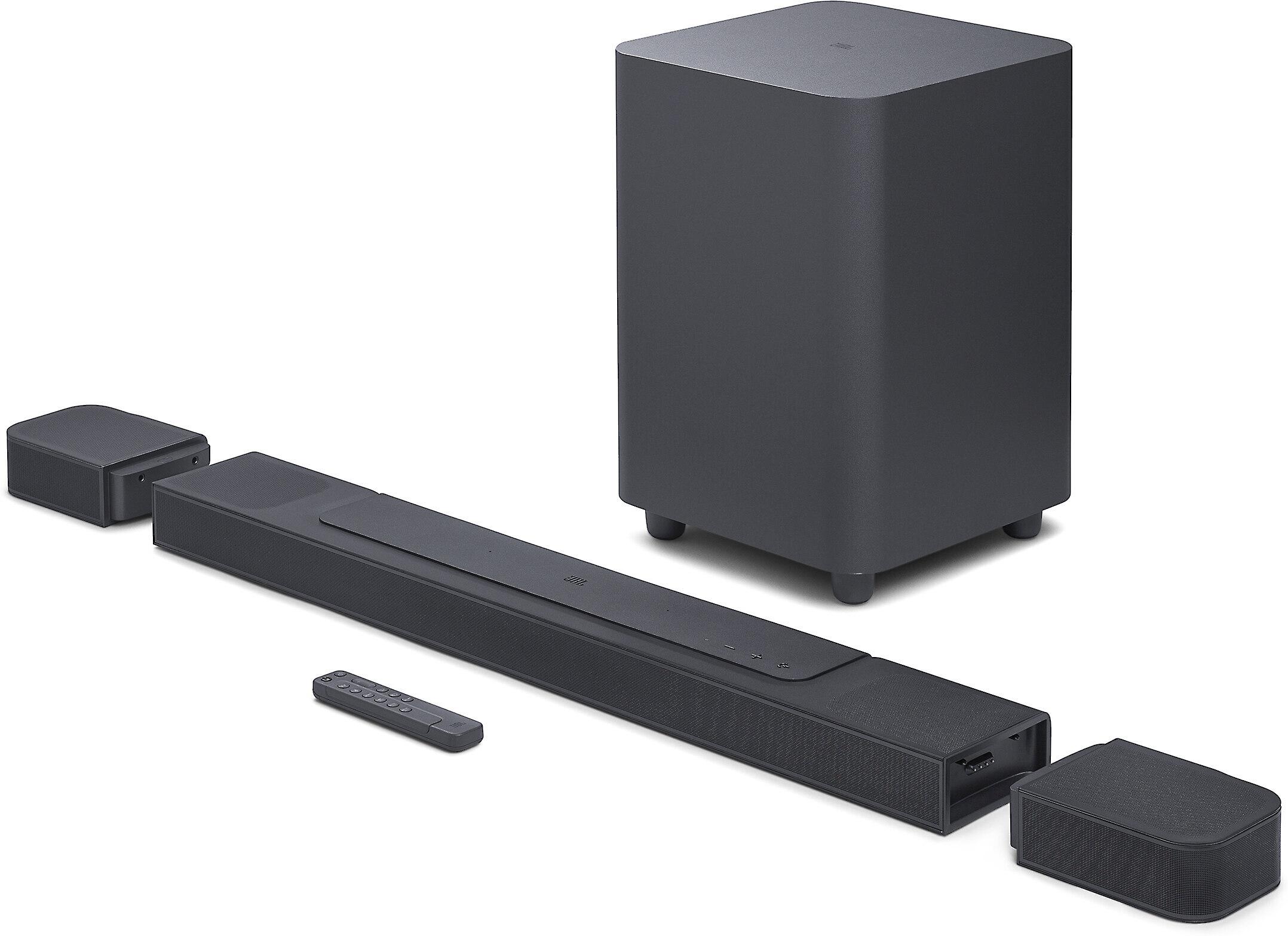
Both systems excel at their core task - delivering engaging, room-filling sound. The Sony HT-A5000's S-Force PRO Front Surround technology creates a convincing virtual soundstage, particularly impressive given it's all coming from one unit. The system uses acoustic beam-forming (think of it as precisely aiming sound waves) to bounce audio off your walls, creating the illusion of surround speakers.
The JBL Bar 1000 takes a more traditional approach with its MultiBeam technology and physical speakers. Having actual rear speakers provides more precise positioning of surround effects - when a car drives past in a movie, you'll hear it move naturally through the room. The four up-firing drivers (compared to Sony's two) create a more convincing overhead sound field for Atmos content.
Bass handling shows a clear distinction between these systems. The Sony integrates dual built-in subwoofers within the main bar, providing tight, controlled bass that works well for music and lighter movie content. However, physics comes into play - smaller drivers simply can't move as much air as larger ones.
The JBL's dedicated 10-inch wireless subwoofer delivers significantly more impactful bass, reaching deeper frequencies with more authority. This makes a noticeable difference during explosive movie scenes or when listening to bass-heavy music genres. The separate subwoofer also allows for flexible placement to optimize bass response in your room.
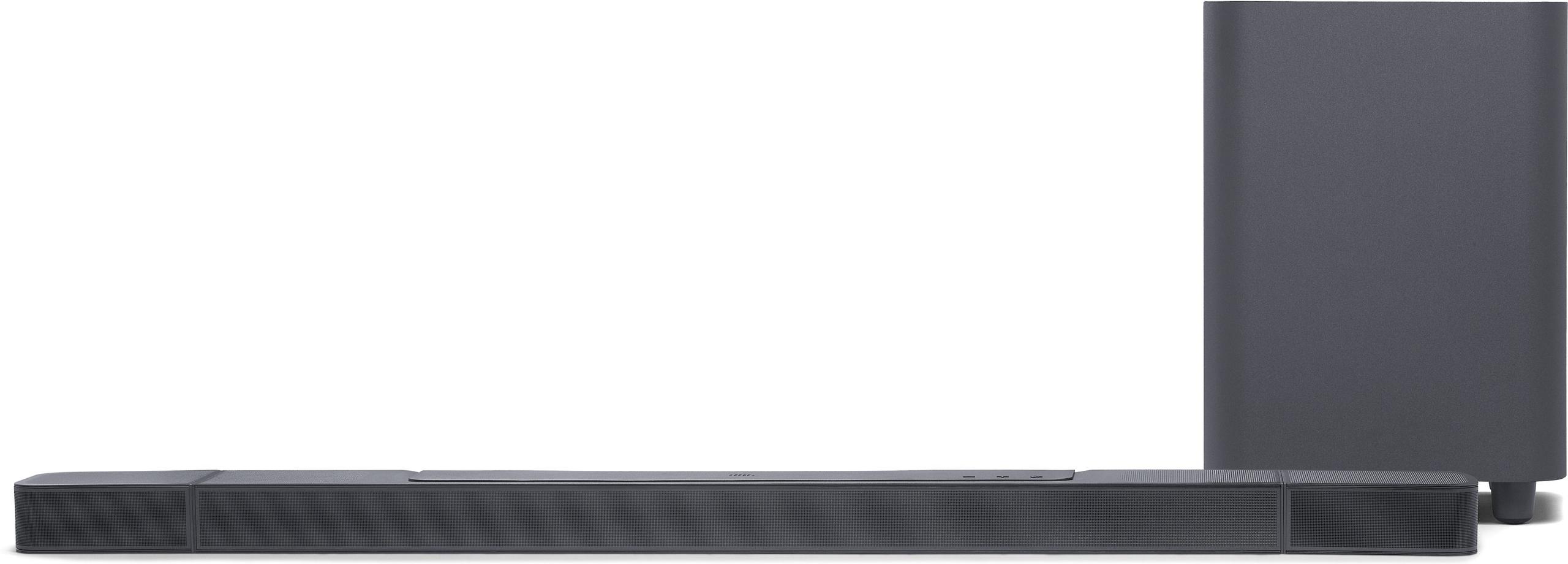
Both systems offer excellent connectivity options, including HDMI eARC (Enhanced Audio Return Channel), which allows for high-quality audio transmission from your TV through a single cable. The JBL provides more HDMI inputs (three vs. one), which is helpful if you have multiple devices like gaming consoles and streaming boxes.
The Sony's more compact design might better suit smaller spaces or situations where aesthetics are paramount. The JBL's modular approach offers more flexibility but requires finding spots for the subwoofer and rear speakers, plus occasional recharging of the detachable surrounds.
Both soundbars support modern audio formats including Dolby Atmos and DTS:X, along with various streaming options through Wi-Fi, Bluetooth, and voice assistants. The Sony's integration with other Sony products is noteworthy - it can work seamlessly with Sony TVs for optimal sound settings.
The JBL's room calibration feature deserves special mention - it automatically adjusts the system's output based on your room's acoustics, something particularly useful given the multiple speaker components. The Sony offers similar functionality but tends to require more manual tweaking for optimal results.
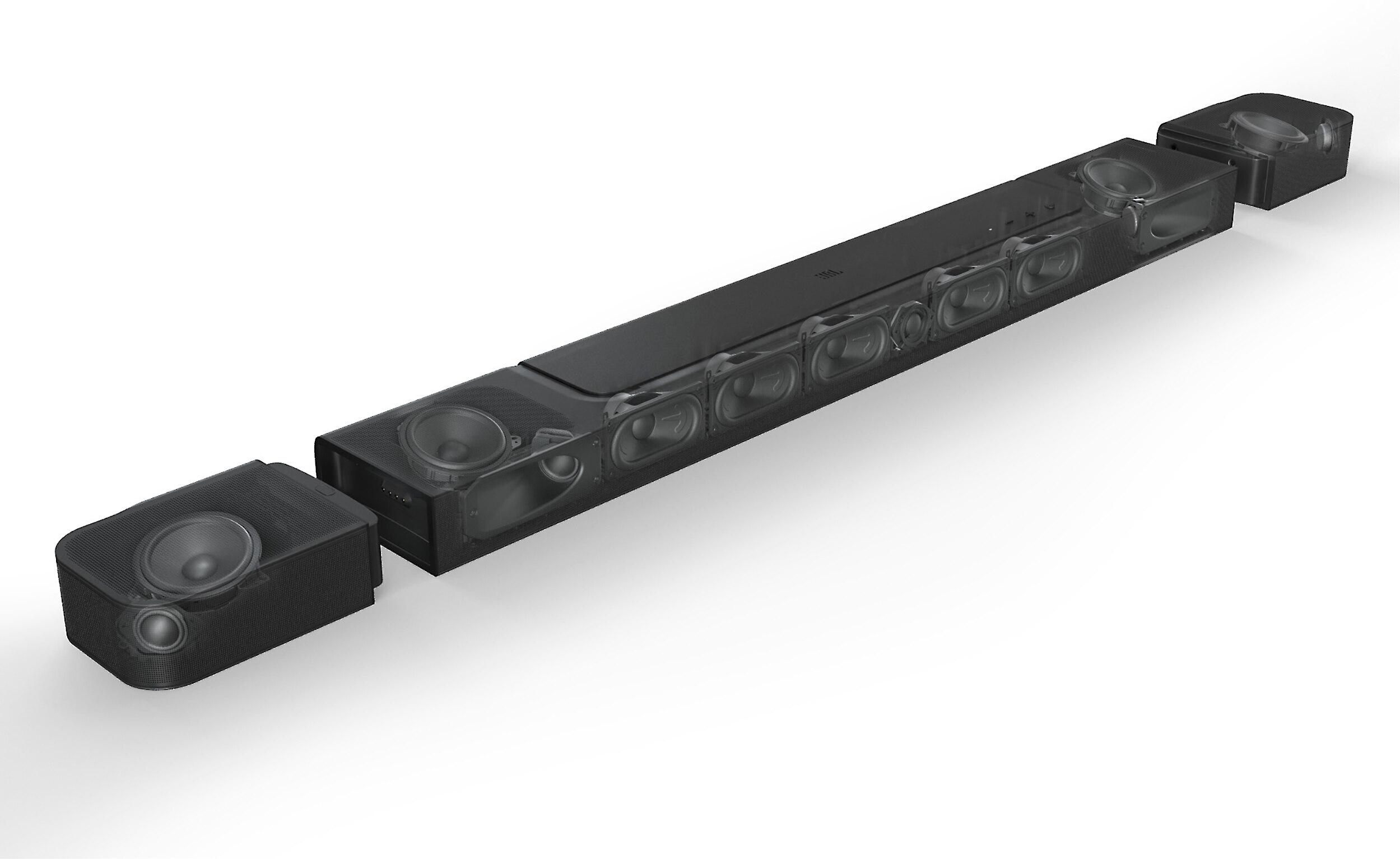
While the Sony HT-A5000 has a lower entry price, it's important to consider the total cost if you plan to add rear speakers and a subwoofer later. The JBL Bar 1000 comes complete but requires a bigger upfront investment.
Consider these key factors when choosing:
Both systems represent excellent choices in the premium soundbar category, but they serve different needs. The Sony HT-A5000 excels as a sophisticated single-unit solution with upgrade potential, while the JBL Bar 1000 delivers a more complete home theater experience out of the box.
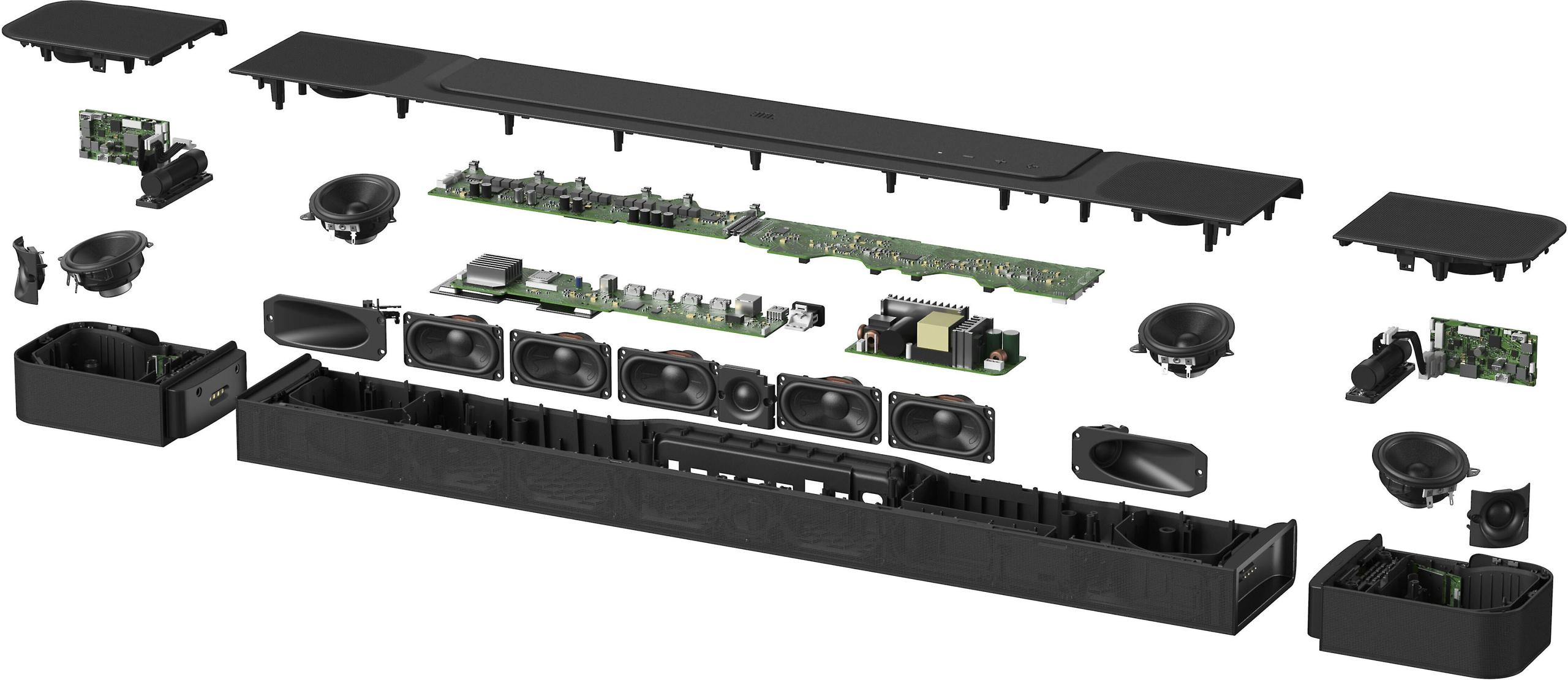
For those prioritizing simplicity and gradual expansion, the Sony HT-A5000 makes more sense. If maximum performance and complete surround sound are your goals, and you have the space and budget, the JBL Bar 1000 is the better choice.
Remember, the best system is the one that fits your space, budget, and listening preferences while providing the features you'll actually use.
| Sony HT-A5000 5.1.2 Channel Soundbar | JBL Bar 1000 7.1.4 Channel System |
|---|---|
| Price - Initial investment consideration | |
| $639.54 (additional speakers optional) | $899.95 (complete system) |
| Channel Configuration - Determines surround sound capability | |
| 5.1.2 channels (all in soundbar) | 7.1.4 channels (distributed system) |
| Power Output - Impacts maximum volume and dynamic range | |
| 450W total system power | 880W total system power |
| Subwoofer Configuration - Affects bass performance | |
| Built-in dual subwoofers | Separate 10" wireless subwoofer |
| Surround Speakers - Critical for true surround experience | |
| Virtual surround (optional wireless rears available) | Included detachable wireless rear speakers |
| Height Channels - Important for Dolby Atmos performance | |
| 2 up-firing drivers | 4 up-firing drivers (2 in bar, 2 in surrounds) |
| HDMI Ports - Affects connectivity options | |
| 1 input, 1 output with eARC | 3 inputs, 1 output with eARC |
| Room Calibration - Optimizes sound for your space | |
| Basic sound optimization | Advanced room calibration with app control |
| Wireless Features - Enables streaming flexibility | |
| Bluetooth, Wi-Fi, AirPlay 2, Chromecast | Bluetooth, Wi-Fi, AirPlay 2, Chromecast |
| Additional Features - Enhances usability | |
| Sony TV integration, Voice enhancement | PureVoice technology, Detachable battery-powered surrounds |
| Size and Installation - Consider room space requirements | |
| Compact single unit (47.75" x 2.75" x 5.62") | Larger system with multiple components to place |
For movies, the JBL Bar 1000 ($900) offers superior performance with its true surround speakers and dedicated subwoofer. While the Sony HT-A5000 ($640) performs well, physical rear speakers and a larger subwoofer make the JBL more immersive for movie watching.
The JBL Bar 1000 delivers better Dolby Atmos performance with four up-firing speakers compared to the Sony HT-A5000's two. This creates a more convincing overhead sound experience for Atmos content.
While the Sony HT-A5000 creates virtual surround sound, physical rear speakers like those included with the JBL Bar 1000 provide more accurate and immersive surround effects. True rear speakers make a significant difference in home theater experience.
The Sony HT-A5000 is better suited for smaller rooms due to its single-unit design. The JBL Bar 1000 requires more space for optimal placement of its subwoofer and rear speakers.
If you're building a home theater system, the JBL Bar 1000 justifies its higher price by including everything needed for true surround sound. The Sony HT-A5000 costs less initially but requires additional purchases for similar capabilities.
The JBL Bar 1000 delivers superior bass with its dedicated 10-inch wireless subwoofer. The Sony HT-A5000's built-in subwoofers provide good but less impactful bass performance.
Both perform well, but the Sony HT-A5000 has particularly clear dialogue reproduction. The JBL Bar 1000 features PureVoice technology that helps maintain dialogue clarity during loud scenes.
The Sony HT-A5000 offers simpler setup with its single-unit design. The JBL Bar 1000 requires more setup time to position multiple speakers but includes automatic room calibration.
Yes, both the Sony HT-A5000 and JBL Bar 1000 support streaming via Bluetooth, Wi-Fi, Chromecast, and AirPlay 2, making them equally capable for music streaming.
The JBL Bar 1000 edges out for gaming with more HDMI inputs and more precise sound positioning. However, the Sony HT-A5000 still provides good gaming performance, especially when paired with a Sony TV.
Only the JBL Bar 1000's detachable rear speakers require charging. The Sony HT-A5000 has no battery-powered components in its base configuration.
Both the Sony HT-A5000 and JBL Bar 1000 can be wall-mounted, though the JBL requires additional consideration for positioning its detachable speakers and subwoofer.
We've done our best to create useful and informative comparisons to help you decide what product to buy. Our research uses advanced automated methods to create this comparison and perfection is not possible - please contact us for corrections or questions. These are the sites we've researched in the creation of this article: whathifi.com - electronics.sony.com - costco.com - sony.com - expertreviews.co.uk - crutchfield.com - audioadvice.com - sony.com - sony.com - bestbuy.com - videoandaudiocenter.com - community.sony.co.uk - zdnet.com - jbl.com - jbl.com - pcrichard.com - rtings.com - d21buns5ku92am.cloudfront.net - ro.harmanaudio.com - target.com - harmanaudio.com - dell.com - mm.jbl.com - dolby.com - jbl.com.my - videoandaudiocenter.com